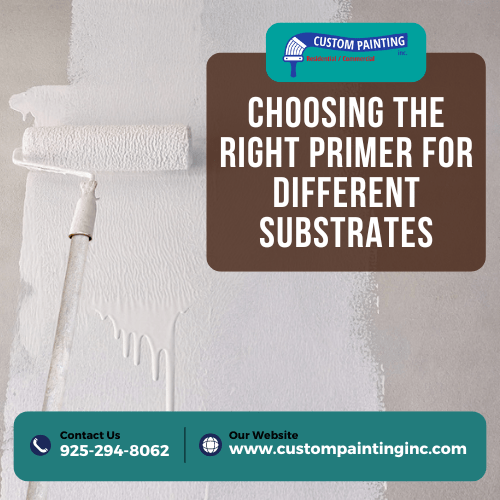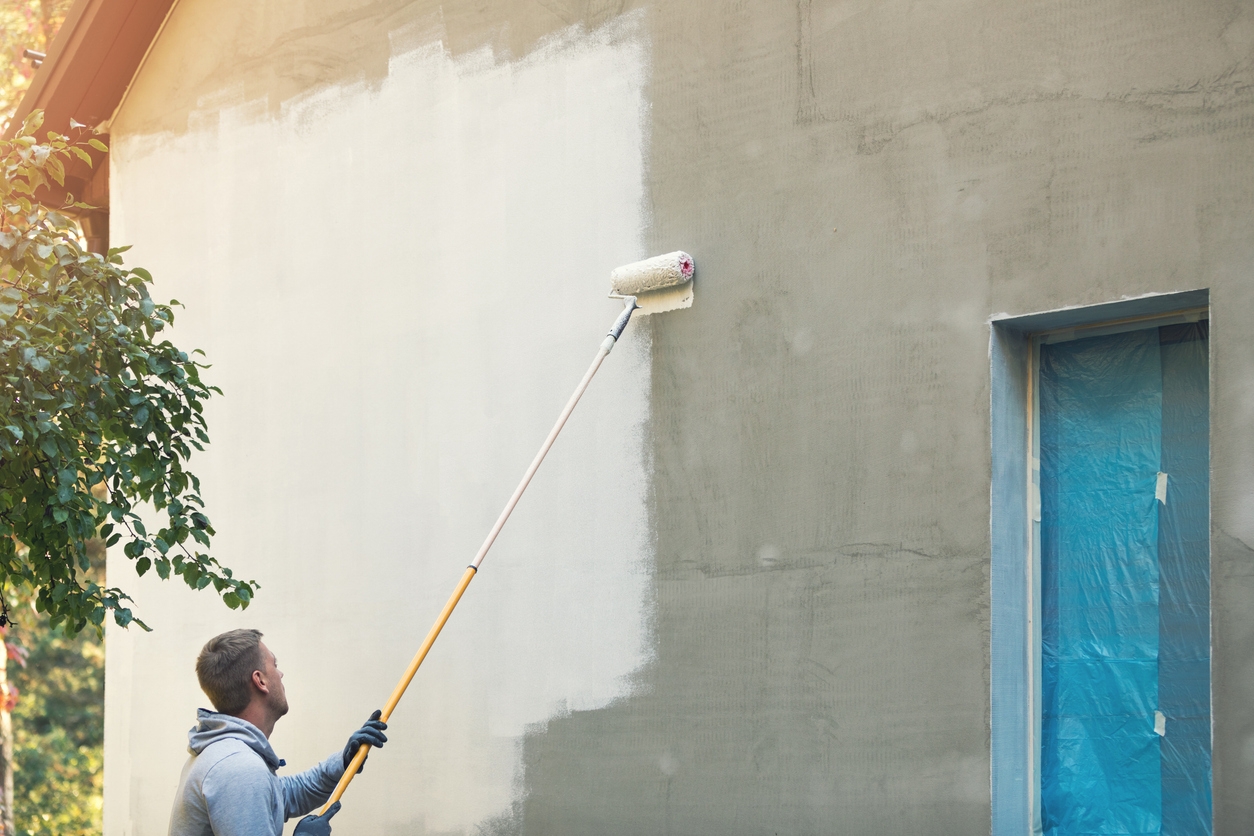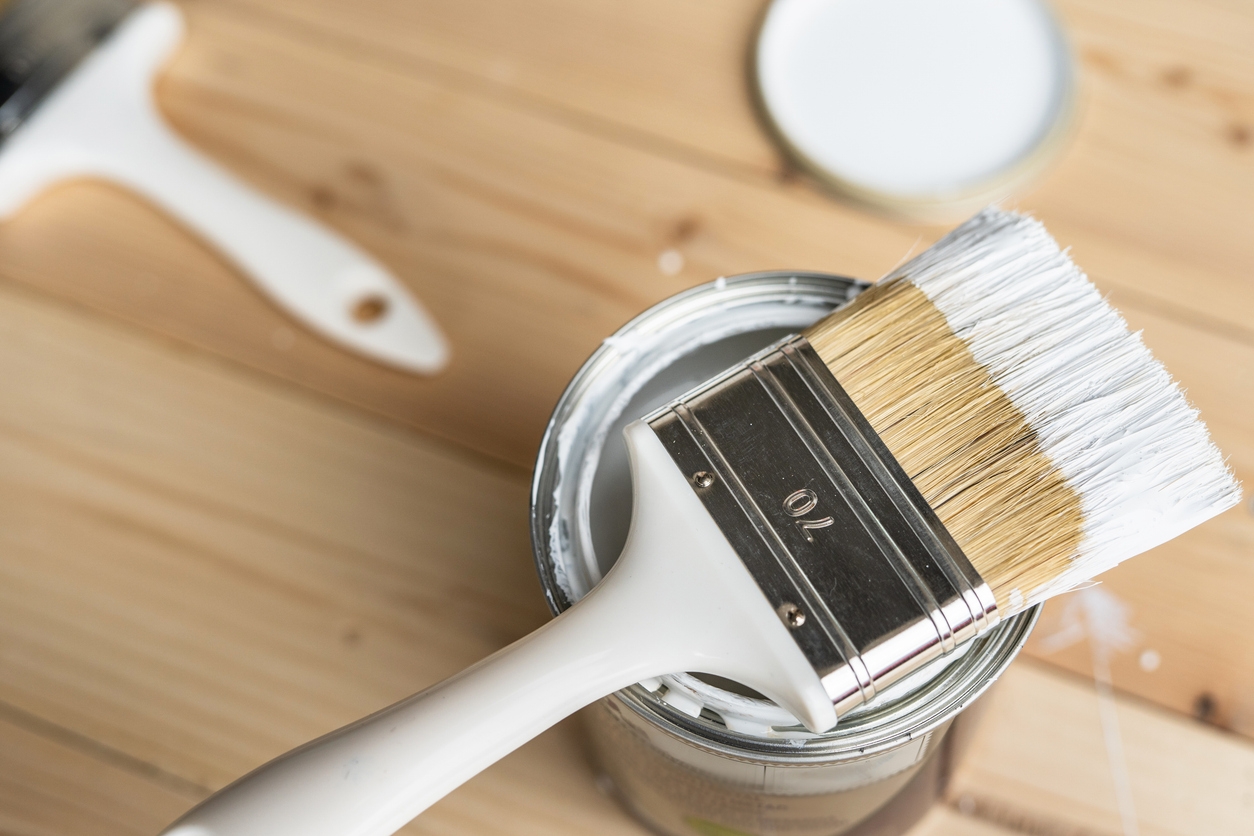Choosing the right primer can make a big difference in any painting project. Each type of surface requires a specific primer to guarantee a better finish and long-lasting results. Whether you’re working with wood, metal, drywall, or concrete, understanding the best primer for the job is key. This article will guide you through the basics of selecting the right primer for different substrates.
Understanding Primers
Primers are the foundation of any good paint job. They prepare the surface, creating a bond between it and the paint. This step is important for durability and appearance. Different types of primers are designed for specific surfaces and purposes.
- Oil-based primers are great for blocking stains and sealing porous surfaces. They work well on wood, metal, and previously painted surfaces.
- Water-based primers, also known as latex primers, are easier to clean up and have less odor. They are suitable for drywall, plaster, and concrete.
- Shellac primers are another option. They are excellent at blocking tough stains like smoke, water, and tannin bleed. They can be used on wood, metal, and plastic.
Using the right primer can help with adhesion, prevent peeling, and improve the final look of your paint job. Knowing the basics about primers can save time and money and result in a better finish.
Understanding Substrates
Substrates are the surfaces you plan to paint. Different substrates have unique characteristics that affect how paint adheres and looks. Understanding these characteristics helps in choosing the right primer and paint for the job.
- Wood is a common substrate that can be tricky. It absorbs moisture and expands and contracts with changes in humidity. This can cause paint to crack or peel if not properly primed.
- Drywall is another frequent substrate. It is porous and can soak up paint unevenly if not primed first.
- Metal surfaces present their own challenges. They can rust and have smooth surfaces that make paint adhesion difficult.
- Concrete and masonry are porous and can have a high pH level, which can affect paint adhesion and durability.
- Plastic is less common but still used in many projects. It has a smooth surface that can make it difficult for paint to stick.
Using the right primer helps create a surface to which paint can adhere.
Primer Selection for Specific Substrates
Choosing the right primer for different substrates can make your painting project more successful. Here’s a guide to help you pick the right primer for each type of surface.
Wood
- Bare Wood
Use an oil-based primer to seal bare wood and prevent tannin bleed for a high-quality finish.
- Stained Wood
Shellac-based primers are ideal for blocking stains on wood and ensuring they don’t bleed through the paint.
- Pressure-Treated Wood
For pressure-treated wood, use a latex primer designed for exterior use to handle the wood’s chemicals.
Drywall
- New Drywall
A water-based primer is best for new drywall to seal the surface and create an even base for paint.
- Patched or Repaired Drywall
Use a stain-blocking primer to cover repairs and prevent them from showing through the final coat.
Concrete and Masonry
- New Concrete
A masonry primer helps seal the porous surface and control the pH level of new concrete.
- Previously Painted Concrete
Use a bonding primer to ensure the new paint adheres properly to previously painted concrete.
- Masonry Surfaces
Choose a primer specifically formulated for masonry to handle the rough texture and porosity of these surfaces.
Metal
- Ferrous Metals
An oil-based primer is effective in preventing rust on iron and steel surfaces.
- Non-ferrous Metals
Use a latex primer designed for metals like aluminum and galvanized steel to ensure proper adhesion.
- Glass and Ceramic
For glass and ceramic surfaces, a high-adhesion bonding primer is necessary to help the paint stick to the surface.
Plastic
- PVC
A bonding primer specifically for plastics works best for PVC surfaces.
- Other Plastics
Use a general-purpose plastic primer to ensure the paint adheres well to other plastic surfaces.
Previously Painted Surfaces
- Oil-based Painted Surfaces
A bonding primer is needed to help new paint adhere to oil-based painted surfaces.
- Latex-based Painted Surfaces
A general-purpose primer can be used to cover latex-based painted surfaces for a smooth transition.
Application Tips and Techniques
Proper application of the primer is key to achieving a beautiful and durable finish. Here are some tips and techniques to help you get the best results.
Surface Preparation
Before applying primer, clean the surface to remove dirt, grease, and debris. This helps the primer adhere better and ensures a better finish.
Sanding the surface lightly can help create a better grip for the primer. This step is especially important for glossy or uneven surfaces.
Fix any holes, cracks, or imperfections before priming. Use filters or patching compounds and let them dry completely.
Primer Application Methods
Using a brush is ideal for small areas and detailed work. It allows for precision and can reach corners and edges easily.
Then, a roller is suitable for larger, flat surfaces. It covers more area quickly and helps achieve an even coat.
Spraying is efficient for covering large or complex surfaces. It provides a smooth, uniform layer but requires careful masking and ventilation.
Drying Times and Recoating
Allow the primer to dry completely before applying the topcoat. Check the manufacturer’s instructions for recommended drying times. Some primers may need multiple coats, so make sure the first coat is dry before recoating.
Common Mistakes to Avoid
Avoiding common mistakes can improve the quality of your paint job. Here are some pitfalls to watch out for:
- Skipping Surface Preparation
Failing to clean, sand, or repair the surface can lead to poor adhesion and an uneven finish.
- Using the Wrong Primer for the Substrate
Different surfaces require specific primers. Using the wrong one can result in peeling, staining, or poor coverage.
- Applying Primer Too Thickly or Thinly
Applying primer too thickly can cause drips and uneven drying, while a too-thin coat may not provide adequate coverage.
- Ignoring Manufacturer’s Instructions
Each primer has specific guidelines for application and drying times. Ignoring these can lead to poor results and reduced durability.
By avoiding these mistakes, you can achieve a longer-lasting finish on your painting projects.
Conclusion
Choosing the right primer for each type of substrate is important for achieving the best results. The correct primer can enhance adhesion, improve durability, and provide a smooth surface for paint. By understanding the needs of different surfaces, you can select the appropriate primer and avoid common mistakes.
For professional assistance, Custom Painting, Inc. offers specialized services to help you with all your painting projects. Call us at 925-294-8062 or fill out a Contact Form on our website to get in touch.



